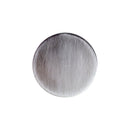Description
Titanium 10-2-3 / UNS R56410 Certified Reference Material (CRM)
This Titanium 10-2-3 certified reference material is a titanium alloy widely used as a standard for calibrating and verifying your spectrometer (XRF, ICP-OES, Spark-OES, etc.). This material is precisely manufactured and certified to have traceable measurements and specified impurity levels, ensuring reliable results for laboratories performing calibration, quality control, and materials testing.
Certified Titanium 10-2-3 Chemical Composition:
| Element | Composition |
| Ti | Balance |
| Al | 3.38% |
| C | 0.010% |
| Cr | 0.014% |
| Cu | 0.0018% |
| Fe | 1.70% |
| H | 0.006% |
| Mn | 0.0011% |
| Mo | 0.0066% |
| N | 0.0058% |
| Ni | 0.013% |
| O | 0.091% |
| Si | 0.029% |
| V | 10.1% |
Typical Ti 10-2-3 Chemical Range:
| Element | Composition |
| Ti | Balance (82.8-86.8%) |
| V | 9-11% |
| Al | 2.6-3.4% |
| Fe | 1.6-2.2% |
| O | 0.13% max |
| C | 0.05% max |
| N | 0.05% |
| H | 0.015% |
| Others (each) | 0.1% max |
| Others (total) | 0.3% max |
Other Names:
Titanium 10-2-3, Ti 10-2-3, UNS R56410, Ti 10V 2Fe 3Al, Ti-10V-2Fe-3Al, AMS 4983, AMS 4984, AMS 4986, AMS 4987
Available material forms:
- XRF: 1/8" thick disc, 1.5" diameter
- OES - 3/4" thick disc, 1.5" diameter
- Chips - 50g of chips, (H, N, O not certified on chips)
Reference Material (RM):
A reference material, or RM, is a material with a known grade and/or chemical composition that is typically used for alloy or grade identification.
Certified Reference Material (CRM):
A certified reference material, or CRM, is a material that has been thoroughly analyzed and characterized using multiple validated methods to determine its chemical composition. The results of these analyses are then used to establish certified values, along with associated uncertainties. CRMs are produced and certified by accredited organizations or laboratories following internationally recognized standards, such as ISO Guide 34 (ISO 17034).
Please Contact Us if you would like to know the specific dimensions of a sample.


